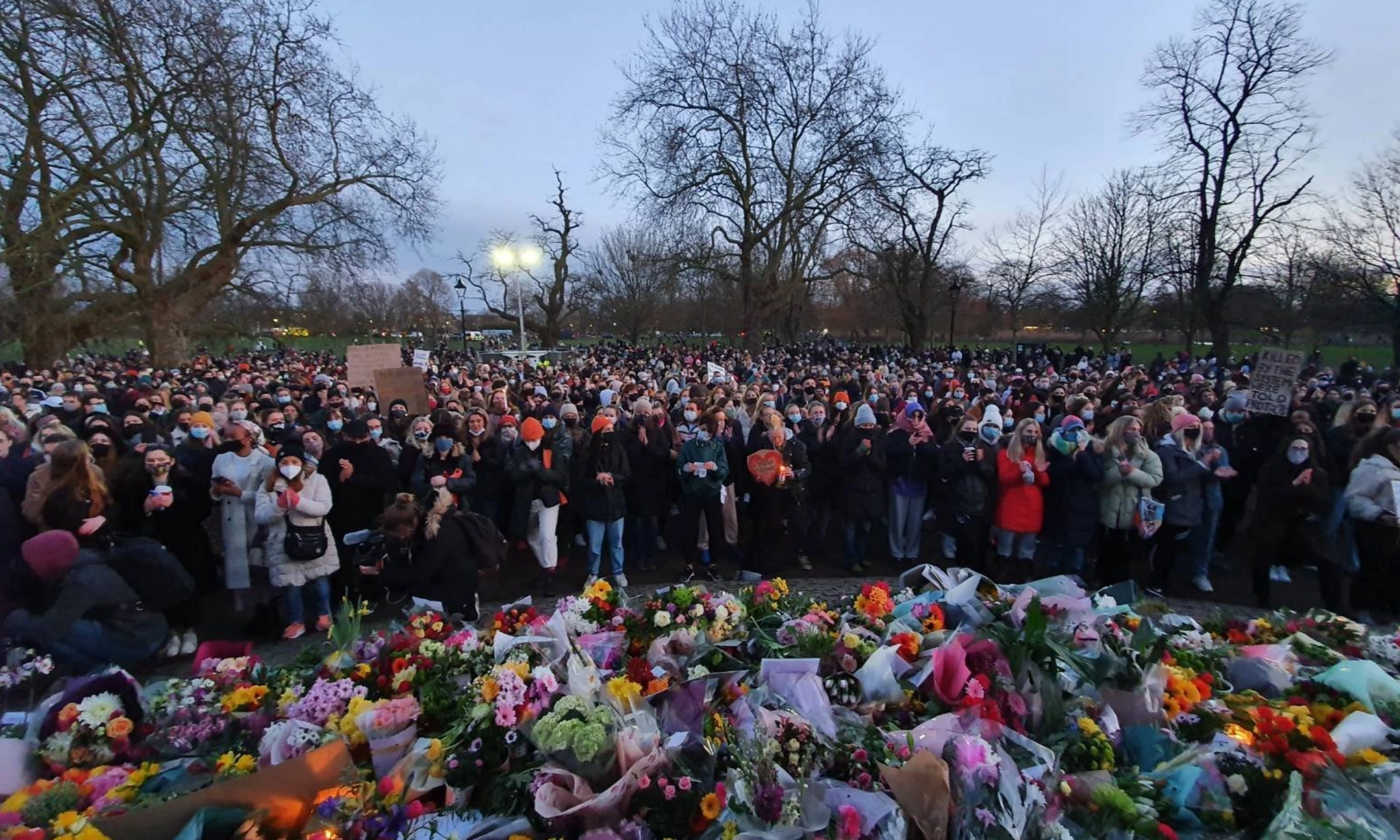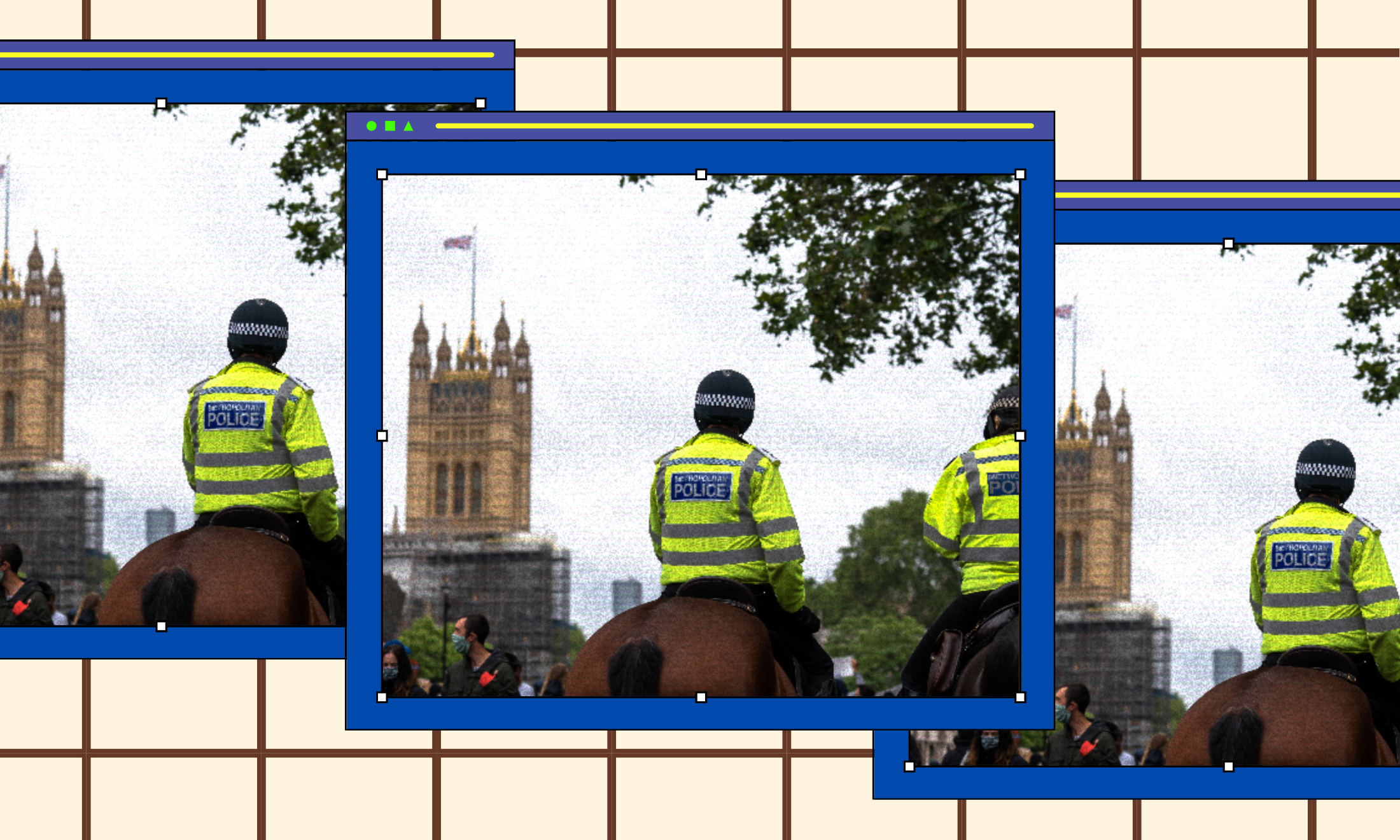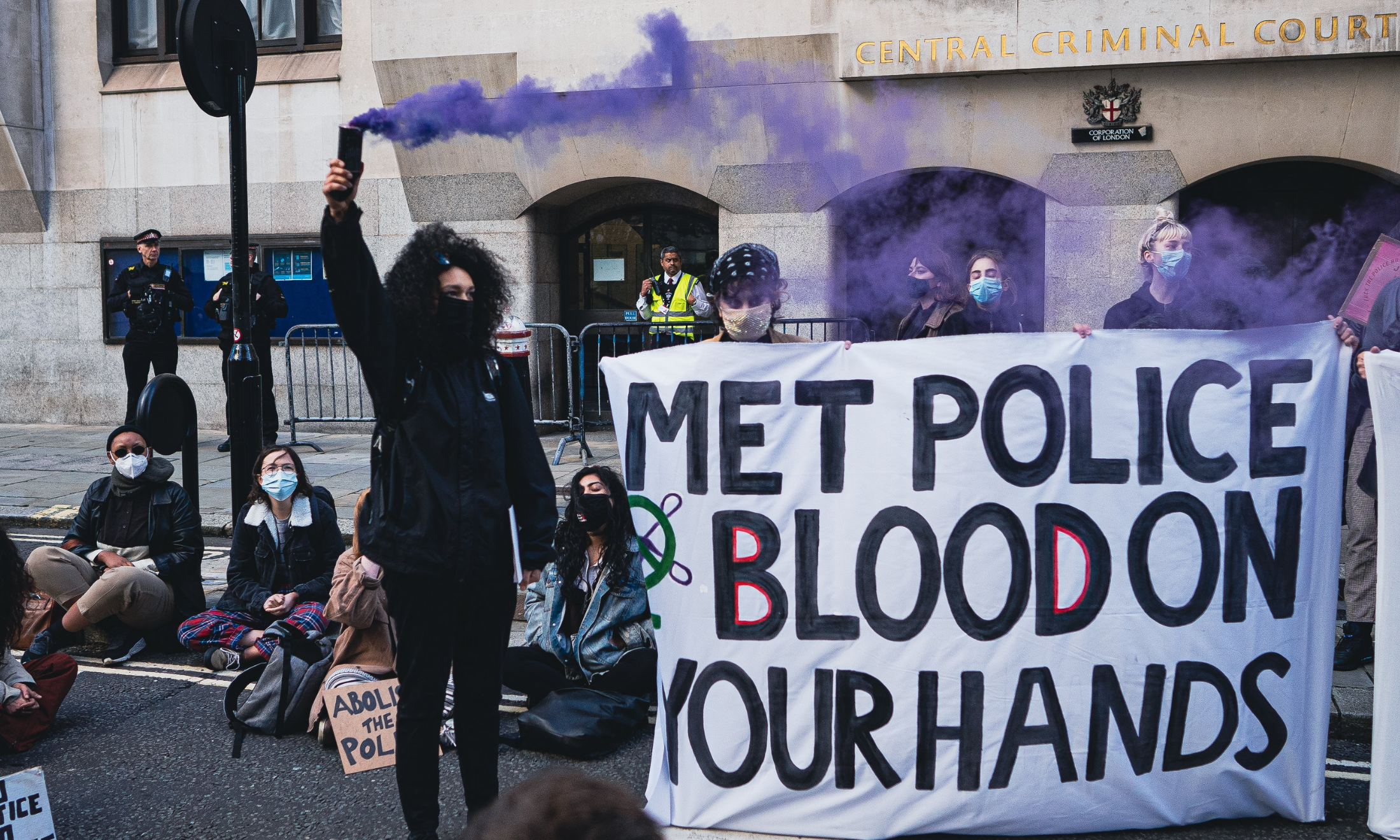Police abolition is the only solution to gender-based violence. This is how it could work
Abolition advocates for the complete defunding and dismantling of police and the prison systems, here's how we reach it.
Maya Bhardwaj
16 Mar 2021

via Sisters Uncut
Content warning: This article contains mentions of sexual assault, police and state violence and gender-based violence
Over the past week, the UK has erupted in protest and mourning of the murder of Sarah Everard, a Londoner who went missing in Clapham, South London, on 3 March 2021. In response to her case, thousands of women have shared their stories of protecting themselves against gender-based violence. Women from marginalised communities experience disproportionate rates of violence, including black women, women of colour, trans women, and those with overlapping intersectional identities. Women across the country have joined vigils and protests to mourn Sarah Everard and stand up against police and gender-based violence.
Discussions initially shifted to the need for more policing, to better protect women from violence. But the man charged in Sarah Everard’s case was a London policeman himself. So who do you call when the police is the perpetrator?
The London Met has called this case a “tragic” exception. But police violence against structurally marginalised communities is hardly an anomaly. I know this first-hand: when I was 19, a police officer in Chicago followed me home late at night and repeatedly asked me to get in his car. He leered at me and told me the neighbourhood, a working-class Black and brown neighbourhood that I knew well, wasn’t safe. Though I told him I was fine, he continued to follow me in his car for several blocks. The subtext was clear: he had power, I was alone, and there were no bystanders. I pretended to enter a stranger’s house from the backyard, terrified, and the officer drove away – but what if he hadn’t?
This experience is part of what brought me as a survivor and a queer woman of colour into abolitionist organising ten years ago. My case is not unique. Almost 200 women have died at the hands of the police and the prison system in England and Wales from the 1970s to the present day. More than 500 Met Police officers have been accused of sexual assault from 2012 to 2018; a mere 43 faced proceedings. Met Police officers took dehumanising photos with the bodies of Nicole Smallman and Bibaa Henry after they were brutally murdered. This week marks the one-year anniversary of the murder of Breonna Taylor, a young Black American woman and an EMT who was killed by the Louisville, Kentucky police while she slept. Daniel Holtzclaw was convicted for raping 13 women while policing working-class Black neighbourhoods in Oklahoma. Cases of domestic abuse against police officers in the UK are often dropped without any measures taken.
Police demonstrated this violence in their response to vigils for Sarah Everard. Protestors were brutalised by London Met forces for gathering to mourn; pinned to the ground and attacked by policemen under the guise of Covid-19 protection, despite indoor transmission widely found to be a key factor. Cressida Dick, the Met Police Commissioner, has defended the Met’s violent response. These actions leave no question: between neglect of survivors, abuse perpetrated by the police, training that preferences police violence and war-like responses towards activists, and structural bias, the system of policing is inherently violent.
The solution to this violence is clear: abolition, a political movement that advocates for the complete defunding and dismantling of police and the prison systems and follows in the legacy of the movement to abolish transatlantic slavery, is the only option. History has shown that the police will not police themselves.
So what does abolition look like on the ground?
In practice, abolition holds two major parts: divesting, and investing. Divesting looks like defunding and dismantling the police and prison industrial system. This could mean removing funding from private and public prisons and from deportation barracks and dismantling extensive police powers. It could be funding social workers, counsellors, and other support workers instead of requiring police to half-heartedly fill these roles. It means abolishing the police.
Investing looks like moving those funds towards community support systems. This includes spaces like Crossroads Centre that support women and survivors of racial and gender-based violence through gatherings, food, child care, and political education. Sisters Uncut, an abolitionist feminist direct action group across the UK, and Reclaim Holloway, a group formed out of community organising for anti-carceral local services, are campaigning for a similar community-run centre to be established at the former Holloway Women’s Prison site. This campaign is in opposition to a plan that would entrench the Mayor’s Office for Policing and Crime in the building and prevent survivors from accessing quality care.
Building these systems requires both supporting pre-existing organising spaces, like Sisters Uncut and Reclaim Holloway, as well as moving resources to grow new organising, especially efforts that are run by survivors of the prison system, survivors of violence, and people of colour – spaces that currently require significantly expanded funding in the UK. And it requires equipping these movements with the political education, training, and tools they need to avoid replicating carceral solutions in their spaces. This means training and support to run mediation and grievance processes that re-educate and reintegrate members who are perpetrators, if it is safe for and acceptable to survivors, rather than preemptively excluding them permanently, through processes that take patience, capacity, and skill. Investment also looks like rejecting austerity by funding quality education, job opportunities, access to food, and other systems that reduce crime rates, keep women safe, and diminish the need for carceral systems.
Fighting for abolition means making these alternatives clear. These ideas are not new: in the UK, they link back to movements in the 1970s and 1980s that called for an alternative to policing that targeted Black and South Asian communities while allowing white fascist violence. Unfortunately, the co-option of these movements meant many shifted focus to working with the state – including the police. Today, communities have experienced policing for so long that alternatives may seem impossible. Communities of colour and working-class communities may see policing as their only protection. But uprisings in the UK sparked by the deaths of George Floyd, Shukri Abdi, Belly Mujinga and many other victims of racist violence, have sparked urgency in re-examining abolitionist alternatives like #DefundThePolice.
What about in cases of rape and gender-based violence?
Bottom-line, the police don’t protect us from gender-based violence: in repeated cases, they are the perpetrators. And when they’re not, the police largely still fail to provide justice.
Only 1.4% of sexual violence offences are prosecuted in the UK and police categorisation systems often mistakenly tag reports as “false” or even convict women of crimes for protecting themselves against abusers. Many more offences go unreported. Women face high risks of violence at the hands of the police, and risks are even higher for demographics such as women of colour, trans people, non-binary people, and people engaged in sex work, causing many not to report.
Women in prison and immigration detention systems regularly encounter sexual violence and abuse. Many women of colour and queer women choose not to contact the police in cases of domestic violence in fear that the police will escalate, not solve, harm. The police as a solution for rape and gender-based violence is a carceral feminist myth or a myth based on false feminism that props up the prison industrial system and punishment rather than justice: even for straight-cis white women and those with privilege, it doesn’t work.
So if the police can’t prevent rape, who can?
Resources like Critical Resistance and INCITE offer key alternatives to protect survivors of violence and those targeted by the police and prison system. Community members can set up community watch projects and accountability systems, to monitor both violent policing and violence within communities. Setting up community accountability systems like pod-mapping can help survivors of violence identify who to go to for support, who can address abusive behavior and who can lead systems of transformative justice to redress harm.
These systems treat survivors as “agents, not victims” who can name what they need and can demand actions, like admissions of harm, that often aren’t possible in carceral systems. These alternatives may also require communities to work with perpetrators as humans who are capable of redemption. While our first understandings of justice may be carceral solutions, abolition challenges us to imagine systems of care that find redemption possible, while still prioritising survivors’ safety and needs. Instead of excluding abusers from community, we can create systems of radical inclusion that protect survivors, emphasise proactive education on consent, and redress harm.
These alternatives are not easy, and they require resources. Survivors may at first be unsatisfied, or mediation methods may not always work: but abolitionist politics encourage us to attempt transformation first. Choosing to study and practice abolitionist feminist alternatives together, to build our skills in knitting community back together, can help prevent abuse, and can create systems of transformation in response.
Alternatives also come from the divest/invest framework. The current budget for survivors of domestic violence is woefully short. Refuges like Sistah Space have been threatened with eviction and shuttering due to lack of governmental funds. Without these refuges, survivors often face continued violence at the hands of their abusers. Abuse can also drive women into criminal offenses as an only resort, which places them at the mercy of a violent police and prison system. Divesting from policing and prisons would free up funds to reverse austerity cuts and protect critical support systems for survivors.
How do we get to abolition?
The first step to get to abolition is to defend the right to organise. The Police, Crimes, Sentencing, and Courts Bill currently facing Parliament deeply threatens that. As activists with feminist collective Sisters Uncut highlighted in vigils and protests at Parliament Square on Sunday and Monday, the bill allows police to disperse any protest, criminalises protestors and opens the door to increased violent reprisals against activists. As abolitionists, we must fight these increases in police powers.
The second step is divesting from carceral systems like prisons and the police. This means rejecting white carceral feminism and dismantling reliance on permanent exclusion as justice. It means blocking plans to expand or build new prisons and preventing deportations as a solution to crime. It means preventing increased recruitment and numbers of the police. It means refusing to be sidetracked by reforms. It means campaigning in our cities to actually abolish the police.
The third step is investing in structures of community accountability and care. This means moving funds from prisons and policing to community infrastructure. It means investing in community organising and building community centres, activist and political education spaces, and spaces for people to deeply know each other. It means education on consent for young people, particularly young boys. And it means practising mediation and harm transformation processes, not only in response to abuse but before conflict occurs. Abolition could have protected the many women like Sarah Everard – and justice means it’s up to us to fight for that abolition, in our lifetimes.

Britain’s policing was built on racism. Abolition is unavoidable

How Pakistan’s Khwaja Sira and transgender communities are fearing and fighting for their futures

Their anti-rape performance went viral globally. Now what?





